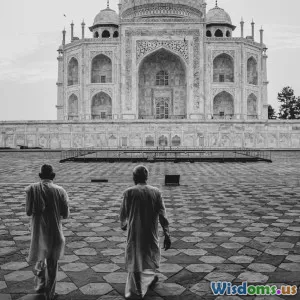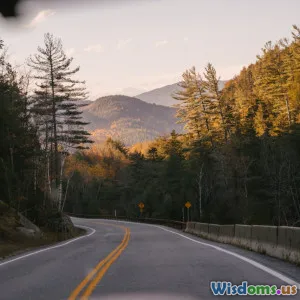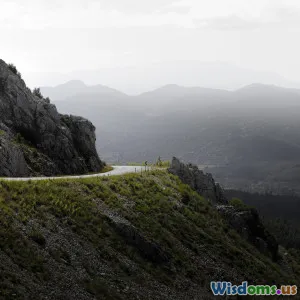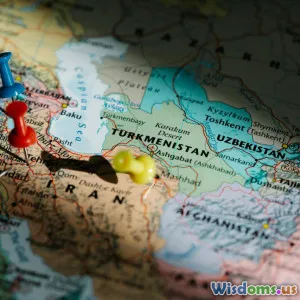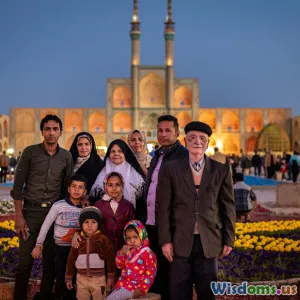
Shooting Hidden Gems Five Rural Destinations Through My Lens
14 min read Explore five picturesque rural destinations, capturing their hidden charm and untold stories, with creative insights, practical tips, and real-world photography examples from firsthand experience. (0 Reviews)
Shooting Hidden Gems: Five Rural Destinations Through My Lens
Introduction: Beyond the Beaten Path – Where Stories Wait to Be Discovered
"There are no foreign lands. It is the traveler only who is foreign," wrote Robert Louis Stevenson—a notion that pulses through every frame I've captured, especially far from the well-trampled tourist paths. While the grandeur of the Eiffel Tower or Canada’s Rockies has been immortalized a million times, it is in the forgotten hamlets, misty valleys, and timeworn barns that I find the soul of a land—hidden gems that echo untold stories.
But why venture into the rural unknown, swapping city skylines for silent dawns over old fences? The answer is simple: in these overlooked corners of the world lie authenticity, resilience, and beauty so raw it stirs both photographer and traveler. These places are treasure troves for curious eyes and hungry lenses.
In this in-depth journey, I invite you behind my camera as I uncover five less-known rural marvels—and offer both inspiration and practical tips for shooting their essence. Grab your curiosity and join me; after all, the best tales don’t always come stamped in guidebooks.
1. Laugarvatn: Iceland’s Steaming Secret
The Landscape Less Seen
Mention Iceland, and most will picture Reykjavik’s colorful roofs or the spectacle of Gullfoss. Yet, nestled quietly on the Golden Circle route, Laugarvatn remains the country’s gentle, geothermal heart—boasting a lakeside village that gracefully curls around steaming springs.
I visited Laugarvatn during late autumn. The air trembled with brisk chill, yet ribbons of mist unfurled from the local hot pools—a hypnotizing mix of volcanic might and rural peace. The hamlet, flanked by birch-wooded hills, forced me to slow my process. Here, time moved at the pace of steam rising.
Shooting the Hidden Story
Photographing Laugarvatn’s essence meant respecting its subtleties. The morning was draped with diffused, silvery light—a boon for gentle landscapes and atmospheric portraits. I set up on the lakeshore at dawn, focusing on the interplay of steam, still water, and crisp sky. Locals fetching water or tending to their sheep became narrative subjects, their routines as integral as the landscape itself.
One image—a sheepdog silhouetted against the fogged window of a turf-roofed sauna—has become a personal favorite. It tells not just of place, but of a way of life survivng amid the elements.
Pro tip: Icelandic light is gorgeously soft—but fleeting. Early mornings and late afternoons often grant magical illumination, perfect for capturing soulful, moody images.
Fun Fact: Despite being on the Golden Circle, Laugarvatn receives a fraction of the traffic that neighboring Þingvellir gets, making uninterrupted shooting possible for patient eyes.
2. The Cotswold’s Lower Slaughter: Tranquility in Motion
Beyond Chocolate-Box England
Travelers in England flock to Oxford or Stonehenge, but the Cotswolds—gentle green hills, stone cottages, and the soft patter of river water—hold a quieter allure. Lower Slaughter, despite its rather ominous name, stands not just as a relic of centuries past, but as a living, breathing community.
You’ll rarely jostle elbows with crowds here. Instead, find cobbled lanes winding by the River Eye, where swans skim beneath the arched honey-stone bridges. The 19th-century mill, complete with red wheel poised over the flowing water, anchors the village in another epoch.
My Creative Approach
I often returned to Lower Slaughter at dawn or just before dusk, when golden light splashed the cottages and smoke drifted from chimney pots. My lens looked for contrasts: the stoic perseverance of the ancient stone versus the fleeting presence of waterfowl, the quiet energy of children skipping stones, the time-worn grooves on the mill’s wheel. These elements, layered, offered deeper context than a single postcard-perfect frame.
Data: According to Visit Cotswolds, Lower Slaughter’s permanent population is just over 200—a testament to its tranquility versus the 100,000 annual visitors at nearby Bourton-on-the-Water.
Shooting Suggestions
Bring a polarizing filter to reduce glare from the water and stone, and a telephoto lens for candid village life. The distinctive yellow limestone glows through the lens at sunrise and sunset, so time your shoots for these moments.
Photographer’s Insight:
“The Cotswolds inspire patience,” local photographer Jenny Leitch told me. “You wait for the fog to lift, the reflection to settle, then the scene rewards those who linger.”
3. Alquézar, Spain: Turrets on the Edge
In the Shadows of Sierra de Guara
A labyrinthine clifftop town, Alquézar perches atop limestone crags in Spain’s Aragon region. While much of the world’s gaze remains fixed on Barcelona or Madrid, Alquézar beckons those with a spirit for ancient mystique and adventure.
Wandering its steep, cobbled alleys, I found echoes of Moorish, Roman, and Christian influences. The town is webbed with archways, flower-stuffed balconies, and the imposing Collegiate Church, crowned by dusk’s golden light. But beyond its Instagram-ready vistas, Alquézar ties itself to the natural world—carved by time, war, and flood.
Composing with Contrast
With my camera, I sought not picture-postcard perfection, but visual storytelling. Framing the battle-scarred walls against verdant olive groves, or juxtaposing elderly locals in weathered shawls with bold hikers setting off for Rio Vero’s gorges.
At siesta, I climbed to a viewpoint and waited for evening. As low sun unleashed saturated hues, swifts darted across the roof tiles, enlivening every frame with motion and implicit narrative.
Pro Tip: Midday light here is harsh due to Spain’s latitude; embrace the early morning or blue hour for sweeping shots, and midday for dramatic silhouettes or architectural details.
Real-World Example:
My favorite image involved two generations: A grandmother leaned on her balcony’s railing, while below, local schoolchildren chased each other between one-arch bridges. Each layer contributed to the story of a place both historical and living.
4. Maramureș, Romania: Fairytale on the Fringe
Wooden Churches and Folklore Alive
The Romanian region of Maramureș borders Ukraine—a land of rolling meadows, ancient beech woods, and wooden churches spiking defiantly skyward. Its villages are scattered, knitted together not by highways but by winding cart tracks and the daily rhythm of rural life.
Most guidebooks will skip Maramureș for more popular destinations like Bran Castle or Transylvania’s cities. Yet this remoteness preserves authenticity. While photographing for a month-long project here, I chased haystacks crowned with storks, weathered peasants in traditional dress, and sunrise services echoing out of 14th-century timber sanctuaries.
Strategies for Capturing Intimacy
Rather than chasing sweeping vistas, my focus was on intimacy and permission. People here are proud, but not performative. Familiarity yielded authenticity: I asked quietly before photographing daily chores—shearing sheep, making cheese, or weaving at the loom.
Anecdote: One afternoon, a villager named Ion invited me to document a baptism—candles flickering against hand-painted icons, family clustered beneath the carved wooden arches. That image became a highlight of my Maramureș series, showing faith lived as much as celebrated.
Photography Tip: Soft window light in orthodox churches bests harsh flashes. A fast prime lens (f/1.8 or lower) will ensure atmospheric portraits without breaking the mood or the trust of subjects.
Cultural Insight:
UNESCO data cites more than eight listed wooden churches in Maramureș, many over 500 years old—a testament to their endurance in a fast-changing Europe.
5. Gokarna, India: Coastal Simplicity Off the Spiritual Grid
A Beach Town Lost in Time
While Goa’s beaches delight millions of international tourists, the coastal village of Gokarna, southward along the Karnataka shoreline, embraces a much quieter form of magnetism.
My days here began at dawn on Kudle Beach, where fishermen hauled in nets as temple bells chimed in the distance. Gokarna’s sacred status draws local pilgrims, but most international travelers miss its old-town maze—narrow alleys lined with ochre-washed homes, saris fluttering from windows, cows dozing in the shade. There is a seamlessness of sacred and everyday; temples abut cafes, rituals thread through daily barter.
Capturing Crossroads of Culture
For a photographer, Gokarna demanded immersion. Imagine children flying kites on the sand while monks meditate 20 yards away. I challenged myself to move slowly, prioritize respect, and blend candid scenes of prayer with vignettes of salt-scented commerce—a shopkeeper weighing coconuts, surfers balancing against blue sky.
Shooting Inspiration: Local light is beautifully angled at sunrise and against fading colonial-era storefronts by late afternoon. For portraits, keep a discreet profile—the community prefers images that respect privacy, especially inside temple courtyards.
Real-World Note:
According to Karnataka State Tourism figures, Gokarna sees a tenth of the annual foreign visitors compared to Goa. This serenity creates a genuine sense of ‘being discovered,’ rewarding patient, respectful documentation.
Conclusion: Bringing the World’s Quietest Corners Into Focus
Hidden gems are more than places where tourists rarely tread; they are chapters of humanity waiting to be read. Each rural destination offers photographers and adventurers a chance to build empathy, tell nuanced stories, and see beyond stereotypes. Through my lens, from Iceland’s misty loughs to Gokarna’s sun-dappled markets, I have learned patience, humility, and the art of truly seeing.
Whether you’re an amateur with a smartphone or a seasoned photographer with kit bags ready for rain or shine, challenge yourself to discover the “invisible” landscapes. Pause longer, ask questions, and seek the subtle patterns—the steam rising in Laugarvatn, the footprints along a Cotswold stream, the grain of ancient wood in Maramureș.
For those craving more than snapshots—who long to contribute, not just consume—a journey through rural realms may transform not only your portfolio but also your worldview.
Final Tips for Aspiring Shooters of Hidden Gems:
- Respect and Permission: Authentic images are built on trust. Ask before taking close-up portraits.
- Gear for Versatility: Carry a lightweight kit—a fast prime lens, a polarizer, extra batteries, and local maps.
- Local Light, Local Lives: Map locations for ideal light. Prioritize moments over perfect poses.
- Patience Pays: Wait out the elements. Return when a scene feels different.
- Share Responsibly: Let the community shape how their home is seen—avoid exploitative or cliché representations.
Now, what forgotten town, overlooked farm, or secret valley awaits your eye—and your lens? Pack your bag. The world’s next hidden gem story is waiting for you to tell it.
Rate the Post
User Reviews
Popular Posts










